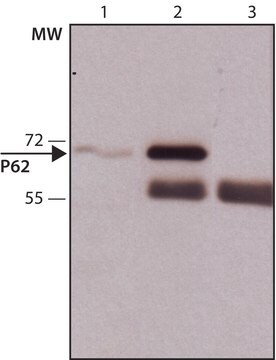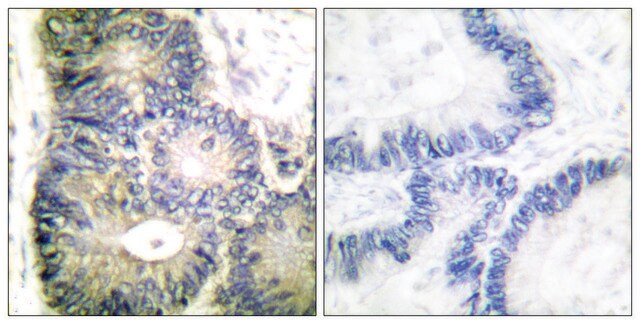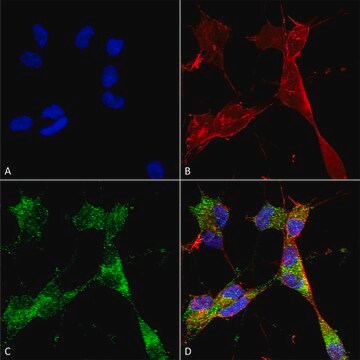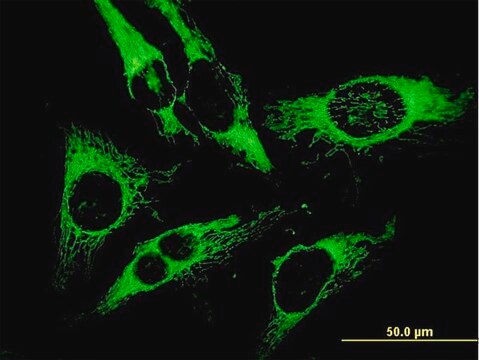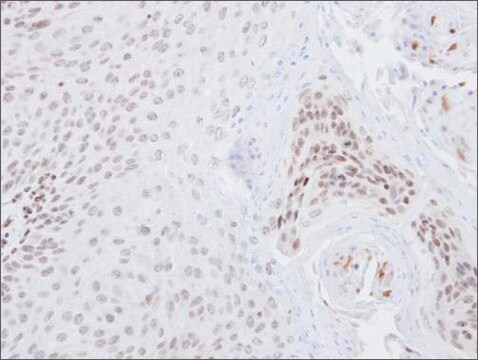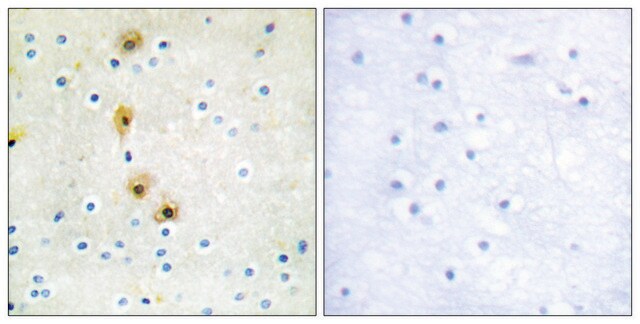MABC186-I
Anti-phospho-p62 (Ser403) Antibody, clone 4F6
clone 4F6, from rat
Synonyme(s) :
Ubiquitin-binding protein p62, p62, EBI3-associated protein of 60 kDa, EBIAP, p60, Phosphotyrosine-independent ligand for the Lck SH2 domain of 62 kDa
About This Item
Produits recommandés
Source biologique
rat
Niveau de qualité
Forme d'anticorps
purified immunoglobulin
Type de produit anticorps
primary antibodies
Clone
4F6, monoclonal
Espèces réactives
human, mouse
Technique(s)
immunohistochemistry: suitable
western blot: suitable
Isotype
IgG2aκ
Numéro d'accès NCBI
Numéro d'accès UniProt
Conditions d'expédition
ambient
Modification post-traductionnelle de la cible
phosphorylation (pSer403)
Informations sur le gène
human ... SQSTM1(8878)
Description générale
Spécificité
Immunogène
Application
Immunohistochemistry Analysis: A representative lot detected p62/SQSTM1 (Ser403) in a Immunohistochemistry application. (Matsumoto, G., et. al. (2011). Mol Cell. 44(2):279-289).
Qualité
Western Blotting Analysis: 0.5 µg/mL of this antibody detected p62/SQSTM1 (Ser403) in Neuro2a cells in which GFP fused human p62 (G-p62) was stably transfected and treated with MG132 vs. an untreated sample.
Description de la cible
Forme physique
Autres remarques
Vous ne trouvez pas le bon produit ?
Essayez notre Outil de sélection de produits.
Code de la classe de stockage
12 - Non Combustible Liquids
Classe de danger pour l'eau (WGK)
WGK 1
Point d'éclair (°F)
Not applicable
Point d'éclair (°C)
Not applicable
Certificats d'analyse (COA)
Recherchez un Certificats d'analyse (COA) en saisissant le numéro de lot du produit. Les numéros de lot figurent sur l'étiquette du produit après les mots "Lot" ou "Batch".
Déjà en possession de ce produit ?
Retrouvez la documentation relative aux produits que vous avez récemment achetés dans la Bibliothèque de documents.
Notre équipe de scientifiques dispose d'une expérience dans tous les secteurs de la recherche, notamment en sciences de la vie, science des matériaux, synthèse chimique, chromatographie, analyse et dans de nombreux autres domaines..
Contacter notre Service technique